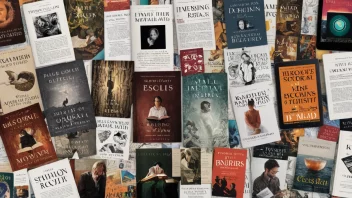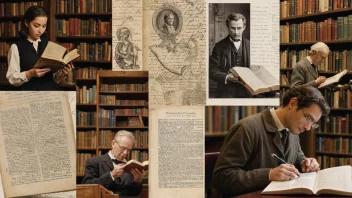In the age of information overload, journalism has evolved significantly, especially with the rise of digital media. One of the most notable shifts is the increasing influence of non-fiction storytelling techniques in journalistic practices. Non-fiction storytelling, characterized by its focus on factual accuracy, narrative structure, and emotional engagement, has become a powerful tool for journalists aiming to capture readers' attention and convey complex truths. This article explores how non-fiction storytelling is reshaping journalism, enhancing its impact and relevance in contemporary society.
At its core, non-fiction storytelling involves weaving factual narratives that resonate with audiences. Unlike traditional news reporting, which often prioritizes the inverted pyramid structure, non-fiction storytelling invites readers into a narrative arc that includes characters, conflict, and resolution. This approach not only makes the content more relatable but also allows journalists to delve deeper into the human experience behind the facts. For instance, a piece covering a natural disaster can go beyond statistics and data by sharing personal accounts from survivors, thereby creating an emotional connection that statistics alone cannot achieve.
Moreover, non-fiction storytelling encourages a more immersive reading experience. Journalists who employ storytelling techniques often use vivid descriptions, anecdotes, and a strong sense of place to transport readers into the story. This immersion fosters empathy and understanding, allowing audiences to grasp the gravity of the issues being reported. As a result, readers are more likely to engage with the content, share it within their networks, and reflect on the broader implications of the news.
Another significant advantage of non-fiction storytelling in journalism is its ability to contextualize complex issues. In an era where news is often fragmented and sensationalized, providing context is crucial for fostering informed public discourse. Journalists who utilize storytelling can present background information, historical context, and expert opinions in a narrative format that feels cohesive and accessible. This not only enriches the reader's understanding but also empowers them to form their own opinions based on a well-rounded perspective.
Furthermore, the rise of multimedia storytelling has opened new avenues for journalists to explore non-fiction narratives. With the integration of audio, video, and interactive elements, stories can now transcend traditional text-based formats. For example, a documentary-style feature can combine interviews, visuals, and narrative storytelling to create a compelling account of social issues. Such innovative approaches not only enhance engagement but also cater to diverse audience preferences, reaching those who might not typically engage with written journalism.
However, the integration of non-fiction storytelling into journalism is not without challenges. Journalists must balance narrative techniques with the ethical responsibility of maintaining factual integrity. The line between storytelling and sensationalism can be thin, and it is essential for journalists to avoid embellishing facts or manipulating emotions for the sake of a compelling story. Striking this balance is crucial for upholding the trustworthiness that journalism demands.
In conclusion, non-fiction storytelling is revolutionizing journalism by making it more engaging, relatable, and informative. As journalists embrace narrative techniques, they can craft stories that resonate with audiences on a deeper level, ultimately fostering a more informed and empathetic society. As the landscape of journalism continues to evolve, the art of storytelling will undoubtedly remain a vital component in the quest for truth and understanding.
The Art of Non-Fiction Storytelling in Journalism
Exploring the transformative power of non-fiction storytelling in journalism and its impact on audience engagement.






